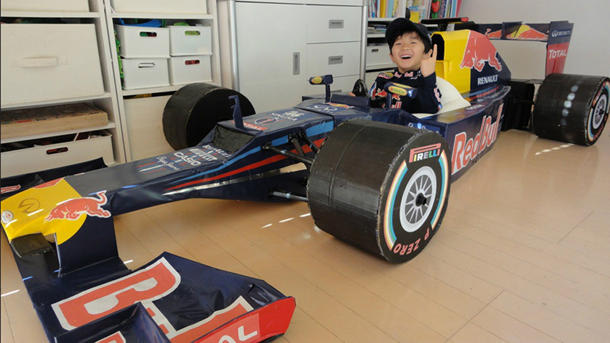Its the most significant moment for F1 since the advent of satellites, says Eddie Baker, the man responsible for broadcasting F1 TV and data around the world.
Today in London, F1's commercial boss Bernie Ecclestone unveiled a deal which will transform the way live F1 races are broadcast and all forms of digital content are consumed.
Its the key which opens up a door onto a new era for F1. Satellite TV revolutionised the sport in the late 1970s, by making it possible for millions of fans to watch races live around the world. This was Ecclestones first revolution, providing the platform which made F1 a global sport, raising billions in revenues.
This long-term deal with Tata Communications, providing fixed line connectivity, opens the door for endless possibilities, way beyond what satellites can do, including broadcasting F1 on the internet, for interactivity between audience and the broadcaster at the circuit.
Tata has the largest network of undersea cables in the world and using MPLS technology its very fast and cost effective compared to previous offerings.
The deal begins with Tata setting up fixed line connectivity at all the 20 Grands Prix for FOM to send its data, such as track maps. The capacity that FOM will start out with is ten times what is currently available. But they have proved out the model to 100x whats currently available, so within a few years it will be the means by which the world feed TV pictures are broadcast, as there are no delays unlike satellite.
Formula 1 wants to transform the way it broadcasts the races and we can and will be a big part of it, said Vinod Kumar, CEO of Tata Communications.
It will also handle video playouts by all the broadcasters on site, all the communications by the media. It brings a standardisation to the means of delivery of content from F1 races. Basically it connects F1 to the world in a completely new way.
It increases the amount of connectivity time, as its always on, unlike a satellite which is on for a matter of hours and its bi-directional, which means it allows the audience to interact with the sport, rather than sit back and consume. It means the sport can have individual relationships with fans, can supply content on a global and even individual basis, looking well down the line.
It will also greatly reduce the tonnage of equipment that FOM TV sends around the world as images can be sent back instantly and processed at the FOM broadcast centre in the UK.
Ecclestone is renowned for being suspicious of the internet and has been accused of missing opportunities as a result. But according to Baker this deal opens the door to endless possibilities,
It gives him the ability to be able to do whatever rights deals he feels are right without limitations, said Baker. That means he can assess every opportunity, he can react to every opportunity, he can move with the times in perhaps a way that we were not able to do in the past.
Ecclestone himself quipped that hed not done a deal like this previously because, Im getting old! . But theres no doubt that this is a complete game changer for the sport and the way fans receive it. As traditional broadcasters like ITV in the UK and TF1 in France struggle with the changing media model and the ability to afford massive rights deals, F1 will have to look in future to pay deals like SKY TV on the one hand and internet TV deals to find revenue and audience growth.
Whether hes the man still doing the deals five years from now when this technology hits its stride remains to be seen. But its a deal F1 needed to do and its now well set for the future.







